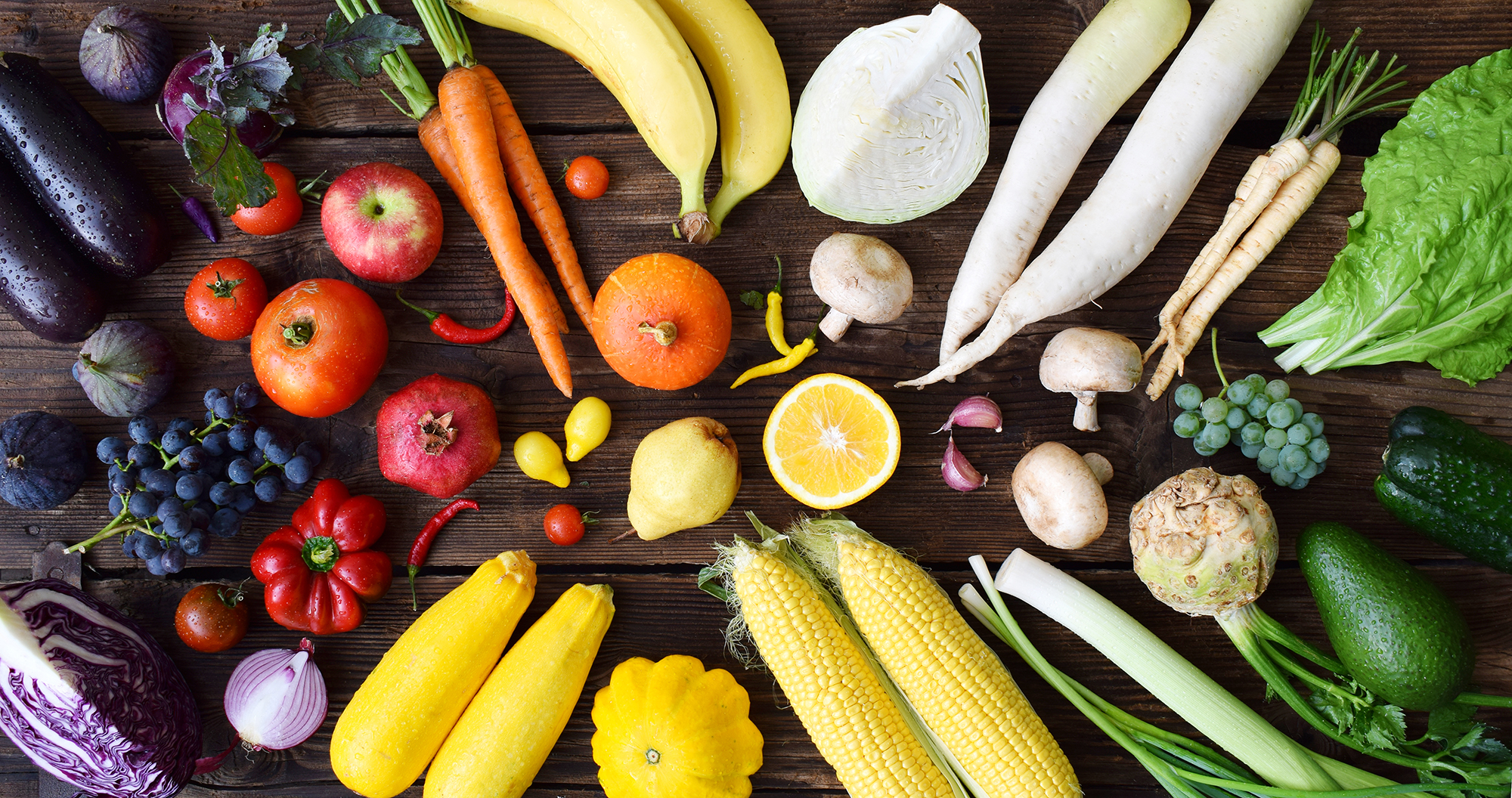Tips for Healthy Eating

Healthy Tip #1 - Veggies
Start your meal with vegetables first. You will feel full sooner and ensure that you get valuable vegetable nutrients.
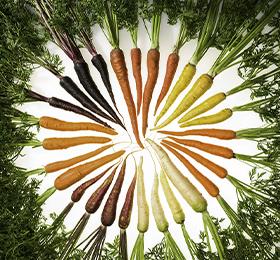
Healthy Tip #2 - Carrots
Looking for a healthy snack? Carrots are one of the most popular vegetables around the world. Did you know that more than 25 years ago, ARS scientists began a quest to breed carrots packed with beta-carotene? That’s the orange pigment in carrots and it’s used by the body to create vitamin A. Today, many carrot varieties have 75% more beta-carotene.
Whether they are orange, red, yellow or purple, they are a nutritious and healthy snack.
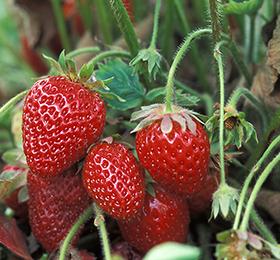
Healthy Tip #3 - Strawberries
What’s your favorite fruit? If you said strawberries, did you know that strawberries are low in calories, very rich in antioxidants and are an excellent source of vitamin C? Strawberries are a healthy snack option and has benefits for heart health and blood sugar control.
Did you know that ARS once saved the strawberry industry? In the 1950s, ARS came to the rescue by releasing the first varieties that could survive a root-rotting fungus called red steele. We didn’t stop there. Since then, ARS has bred and released dozens of strawberry cultivars that can stand up to the many challenges growers face such as insects, diseases, short growing seasons, and the rigors of harvest and transport.
Instead of reaching for a sugary beverage or treat have a serving of sweet, juicy, and delicious strawberries.

Healthy Tip #4 - Melons
Mmm…! Watermelon, cantaloupe, and honeydew are refreshing and good for you. They help you hydrate, provide you with a variety of nutrients and have numerous health benefits.
An ARS scientist in Wyndmoor, PA, developed a cool technology that steam-cleans cantaloupes and reduces pathogens. The successful technology may also be used to sanitize watermelon, honeydew melons, cucumbers and carrots.
Here’s an idea, try having melon balls or pop a chunk of the delicious fruit on a popsicle stick, freeze it and enjoy a cool and healthy treat for dessert.
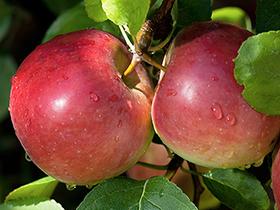
Healthy Tip #5 - Apples
Apples are a delicious snack and incredibly good for you. Gala, Granny Smith, Honeycrisp, Pink Lady, Golden Delicious, Red Delicious, Fuji, McIntosh – no matter your taste preference, there’s an apple just for you. With such a variety to pick from, you will be doing your body a favor when you eat them. Some health benefits commonly associated with apples include moderating blood sugar levels and blood pressure, boosting vitamin C, reducing cholesterol, supporting brain function, and promoting good health.
At ARS, we love apples too, which is why our researchers are developing very cool innovations to ensure the apples in your grocery store or farmer’s market are fresh, tasty, and high quality. We are breeding apple rootstocks that are more resistant to pests and diseases, that bear more delicious fruit, and are more ideal for apple growers to pick and prune.
You can find apples everywhere, even at McDonald’s. Back in 2004, ARS scientists and their partner developed and patented a coating that keeps peeled apples from browning without changing their texture or flavor. This technology helps McDonald’s provide their customers with wrapped apples that are still crispy and tasty.
Want to learn more? Put your earphones on and listen to this fun and tasty apple podcast.
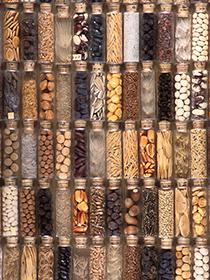
Healthy Tip #6 – Nuts and Seeds
You’ve heard it before, “Eat nuts and seeds” as a healthy snack alternative. It’s true. Nuts and seeds are a great source of protein, fiber, antioxidants; contain a wide variety of vitamins and minerals; and are high in healthy fats. They also help regulate body weight, burn energy, and keep us fuller longer!
Replace that muffin, biscuit, or cake with a serving of raw or dry roasted nuts. Combine nuts and seeds with vegetables, salads, or sprinkle them onto breakfast cereals.
Did you know seeds are loaded with:
• Calcium - essential for healthy bones
• Iron - helps you make proteins that carry oxygen-rich blood throughout your body
• Phosphorus – helpful for many body functions such as repairing our cells
• Magnesium - helps our bodies stay hydrated and our brains healthy
Speaking of seeds, did you know ARS has a seed vault at Iowa State University that is keeping seeds safe to ensure a more sustainable future and helping farmers by enhancing the seeds that we already have today? Here’s a cool video; take a tour and learn more.
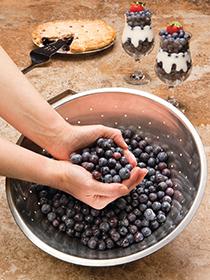
Healthy Eating Tip #7 – Blueberries
Love blueberries? Blueberries are healthy and nutritional powerhouses that taste delicious whether fresh, frozen, dried, or processed.
There is a very good chance that the blueberries you eat can be traced back to varieties developed by ARS scientists, who started a breeding program on wild blueberry plants in the early 1900s. ARS developed nearly 100 new blueberry varieties in order to help our farmers meet consumer demands for the delicious fruit.
Did you know that Mississippi is among 10 states that grow 98% of America’s commercial blueberry crop? Have you ever wondered why blueberries are blue or why they are hailed as ‘superfruits’ or how to make them last longer? We did an interview with two researchers at the ARS Genetic Improvement for Fruits and Vegetables Lab located in Beltsville, MD and they answered these questions in Breeding Better Blueberries.
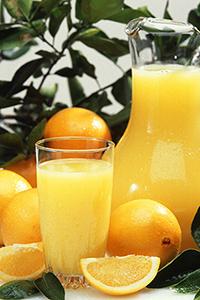
Healthy Eating Tip #8 - Orange Juice
Have a glass of fresh orange juice and you will be providing your body with surprising health benefits. Orange juice is an excellent source of Vitamin C, folate, and potassium and plays a central role in supporting your immune system.
Fifty years ago, frozen orange juice was just a flavorless, commercial flop. The only orange juice you could get back then was either squeezed from fresh oranges, mixed from a tasteless concentrate, or poured from a can-and it tasted like a can! Flavor is one of the most important qualities of orange juice, and aroma compounds are significantly responsible for the fresh-squeezed taste that we all like. Unfortunately, those aroma compounds evaporate during the condensing process used to make frozen concentrated orange juice. Sixty years ago, the director of research for the Florida Citrus Commission suggested that adding a little single-strength fresh juice to slightly overconcentrated orange juice might restore the flavor and aroma lost during evaporation. ARS researchers used this idea and with their expertise and hi-tech equipment and were able to vastly improve the flavor of orange juice, making it taste more like fresh.
Wondering if different oranges and orange juice have the same amount of vitamin C? To find out, check out AgLab’s vitamin C challenge.

Healthy Eating Tip #9 - Sunbutter
Have you seen the peanut butter alternatives in your local grocery store? For those with peanut allergies, finding a healthy alternative is an important part of planning and making food choices. Researchers at the ARS Southern Regional Research Center in New Orleans, LA and their collaborator helped develop a sunflower-seed spread that offers a tasty option for those who are allergic to peanuts. The sunflower butter product, known as SunButter®, resembles the flavor, texture, and appearance of commercially available peanut butter. SunButter® is made from sunflower seeds but tastes like peanut butter and has had tremendous commercial success. It is available in a variety of flavors (creamy, organic unsweetened, natural, natural crunch, and natural omega-3). What’s even better is you can place an on-the-go snack size called, “go packs,” in your lunch bag, backpack, or purse.
SunButter® is a good source of protein, fiber, vitamin E, zinc, and iron and can also be found as a added ingredient in some energy bars.
The next time you are in the grocery store, look for SunButter®
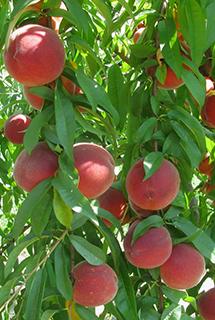
Healthy Eating Tip #10 – Peaches
Peaches! You may already know that the state of Georgia is the peach capital of the United States, but many peaches also grow in California. Did you know there are over 2,000 varieties of peaches? Like many fruits, peaches are a good source of fiber, vitamins, and minerals, specifically vitamins C, A, E and K. These nutrients help fight disease and help build healthy eyes and bones. Peaches boast lots of potential health benefits, including aiding digestion, reducing allergy symptoms, and improving heart health. The fruit is power-packed with antioxidants and has anti-inflammatory properties. Peaches are a terrific snack when you want something sweet and juicy.
By the way, ever wonder why peaches have fuzz on their skin? The fuzz is a defense mechanism designed to help protect the peaches from insects, disease, even poor weather while they grow on trees. What is the ARS connection to peaches? ARS researchers are controlling peachtree borers, a destructive pest of peach orchards, in Southeastern peach orchards using a technique that successfully disrupts their activity. The technique has been used in more than 5,000 acres of peaches in Georgia. That’s good news for peach lovers and the peach industry.
Drop a peach in your lunch bag for a healthy afternoon or evening snack and reap the health benefits while enjoying the sweetness of the fruit. Did you know that ARS also released three new peach varieties? We call the trio of Joy peaches, Rich Joy, Liberty Joy, and Crimson Joy. All three “Joy” peaches are yellow with rosy skins and have balanced flavor making them a perfect healthy treat.
Learn more about the trio of Joy peaches.
Want to find out more about how we are controlling peach borers? Check out this short article.
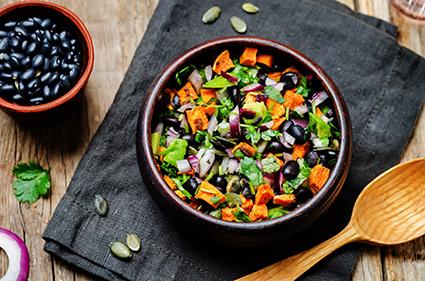
Healthy Eating Tip #11: Black Beans
Don’t skip the black beans. Did you know that black beans, also known as turtle beans because of their shiny, hard, shell-like appearance, are among the most frequently-eaten legumes? Black beans are naturally low in sodium, have a high fiber content, and are rich in antioxidants. Studies show that they have many potential health benefits, such as lowering blood pressure, aiding digestion, and warding off chronic illnesses like heart disease and type 2 diabetes. An ARS study revealed that eating just a small amount of cooked black beans—about half a cup per day—can help restore healthy gut bacteria and improve sensitivity to insulin and other measures related to diabetes. So go ahead and add the black beans!
Want to make your own burrito bowl? Check out this recipe: https://www.nutrition.gov/recipes/burrito-bowls
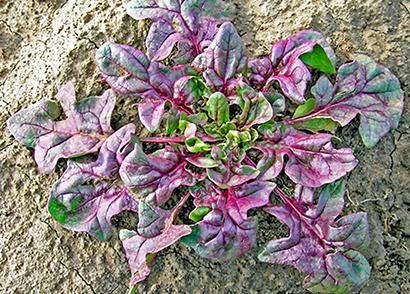
Healthy Eating Tip #12: Spinach
Spinach may not be flashy, but it packs a punch when it comes to nutrition and flavor. A rich source of vitamins and minerals, it contains potassium, vitamins A, C, E, and K, fiber, calcium, iron, folate, and zinc. Together, these nutrients can increase energy, promote healthy skin and hair, regulate blood pressure, and improve eye health.
While most people picture spinach as a leafy green vegetable, it can also come in other colors; in 2019, ARS announced that it had developed and released the world's first true red spinach variety. USDA Red is considered a "super food" because it is nutrient-rich and is especially beneficial for health and well-being. Its red color comes from a phytonutrient (that is, a nutrient that comes from plants) called betacyanin, which is a potent antioxidant that has been shown to significantly reduce oxidative stress, a condition that happens when your antioxidant levels are low, and may even help to prevent chronic illnesses, inflammation, and cancer. USDA Red is a semi-flat type of spinach with a medium growth rate and semi-erect, spade-shaped leaves with round-pointed tips and purple-red veins and petioles.
If you want to enjoy its health benefits, toss a little spinach into scrambled eggs, add it to pizza, soup or stew, blend it into a smoothie, stir-fry it or add it to your favorite salad. It's versatile and tasty – and your body will thank you.
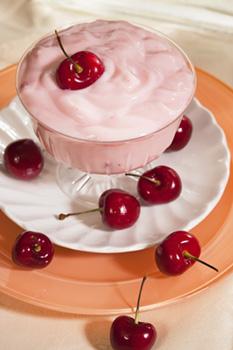
Healthy Eating Tip #13: Yogurt
Yogurt is one of the most popular fermented products in the world. It is made by fermenting milk that is heated and mixed with bacteria such as Lactobacillus bulgaricus and Streptococcus thermophilus, both beneficial for digestive health. In fact, creamy, delicious yogurt is considered a nutrient powerhouse. It is an excellent source of protein, calcium and potassium, which help to build strong muscles and bones and provide your body with energy. Yogurt with breakfast, as a snack, or in a smoothie, is an easy way to get the nutrient boost you need to start your morning. Just check the ingredients and make sure your yogurt is low in sugar. For a fun way to enjoy yogurt with the whole family, try this recipe for confetti yogurt pops that have just 3 simple ingredients.
Learn how ARS is making yogurt even healthier.
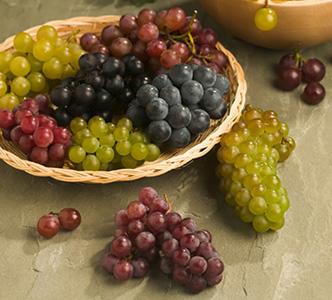
Healthy Eating Tip #14: Grapes
Having grapes for lunch or a snack? Not only are those little globes jam-packed with vitamin C and other nutrients, but they are also full of water, which can help keep you hydrated.
Speaking of grapes, think about the last time you ate them. Did you have to pick seeds out of your teeth? Most likely, the answer is no! That's because ARS scientists bred "seedless" grape varieties with seeds so small that you can't detect them. ARS scientists have developed more than half of the top 10 varieties of seedless grapes, including the Flame Seedless, Crimson Seedless, Thomcord, and Autumn King.
Watch this video to learn more.

Healthy Eating Tip #15: Fish
Current dietary guidelines recommend that Americans double their seafood intake in order to get more beneficial nutrients, especially Omega-3s, fatty acids that are critical to many of the body’s functions. Omega-3s provide energy-boosting calories, form an important part of cell membranes, and support many functions in the heart, blood vessels, lungs, immune system and endocrine system (the network of hormone-producing glands). They serve as the starting point for production of hormones that regulate blood clotting, contraction and relaxation of artery walls, and inflammation. Research has also shown that Omega-3s can help prevent cardiovascular diseases like heart disease, control rheumatoid arthritis, and protect against cancer and other conditions. They also play an important role in the health of the brain and nervous system, as well as supporting vision.
Many fish, like salmon, mackerel, herring, sardines, and anchovies are high in omega-3 fatty acids, but did you know that salmon are one of the most nutrient-dense foods on the planet? Salmon is the most popular fish species in the United States, and Americans consume nearly 450 tons of it each year! That’s a lot of fish, which is why ARS researchers are working to bring healthier, stronger salmon to your plate.
Ready to add salmon to your diet? Try these easy-to-make Grilled Fish Tacos and Salmon Burgers.

Healthy Eating Tip #16: Smoothies
Did you know that there are five food groups that help us stay healthy? They are fruits, grains, dairy, vegetables, and proteins. There are a variety of ways to incorporate foods from the five food groups into your diet. One way is by making smoothies, which have become increasingly popular because they are versatile, easy to prepare, nutritious, and tasty. Smoothies are thick, creamy beverages that are usually blended from fruits, vegetables, juices, yogurt, nuts, seeds, or milk. They can easily be modified for taste and dietary preference. There are several kinds of smoothies. Green smoothies are usually packed mostly with leafy green vegetables and fruit and blended with water, juice, or milk. Fruit smoothies typically feature fruit blended with a liquid. For a well-balanced fruit smoothie, use one or two fruits blended with calcium-fortified milk or a non-dairy alternative and a handful of spinach. Protein smoothies mainly contain one vegetable or one fruit, a liquid and a protein source like tofu, cottage cheese, or Greek yogurt. Smoothies are a great option if you are on the go, and a creative way to boost your fruit and vegetable intake.
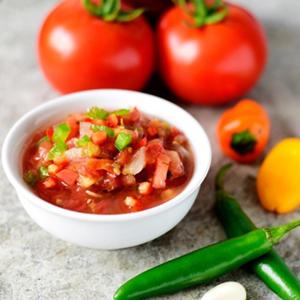
Healthy Eating Tip #17: Salsa
If there’s one thing Americans love to put on their food, it’s salsa!
Although salsa can be prepared using a variety of ingredients, it typically consists of tomatoes, onions, peppers, and spices. The first salsas were made thousands of years ago by the Inca, Maya, and Aztec people in Mexico and Central America. In Spanish, the word salsa means “sauce.”
Some people assume salsa is only served with chips, but this popular condiment can also be paired with steak, tacos, burritos, eggs, chicken, and other dishes.
U.S. farmers grow everything you need to make salsa tasty and delicious. Perhaps the most important ingredient in salsa is the tomato. To give consumers more and better tomato options, the USDA’s Agricultural Research Service developed the Roma tomato in 1955. Bred to be highly resistant to diseases and insects, the Roma offers flavorful flesh, and abundant lycopene, a chemical compound that gives tomatoes their bright red color and helps to prevent cancer. Ready to learn more about tomatoes? Put on your headphones and listen to our Science in Your Shopping Cart podcast about the Roma tomato.
Another key ingredient in salsa is peppers. Check out our recent video, Cooking with Science: Peppers to see chef Elliott Farmer create delicious recipes that you can make at home, using ARS-developed peppers. Jalapeño peppers are popular in salsa recipes, but if you really want to kick it up a notch, TigerPaw-NR, a habanero pepper developed and released by ARS, will put some pep in your step. Learn more about ARS pepper research in our Pepper Portal.
Of course, these ingredients are just the beginning — you can always add your own favorite ingredient for a personal twist on salsa!
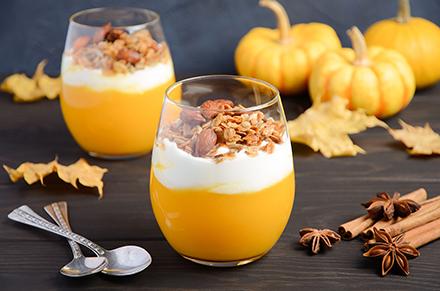
Healthy Eating Tip #18: Pumpkin
Pumpkins: we all recognize them as a hallmark of fall (along with their not-quite-real cousin, pumpkin spice), but what do we really know about them? Did you know that pumpkins are a member of the squash family, and are rich in beta-carotene, a natural plant compound that gives them their beautiful orange color?
Beta-carotene is a red-orange pigment found in some plants and fruits. It is one of several kinds of carotenoids, chemical compounds created by plants that help give them their bright yellow, orange, or red pigments. Carotenoids play an essential role in photosynthesis and have two major roles – to harvest light and to prevent damage when the plant is overexposed to sunlight. They act as photo-protectors, antioxidants, color attractants, and precursors of plant hormones in non-photosynthetic organs of plants.
ARS scientists have developed a way to measure beta-carotene and other beneficial carotenoids found in pumpkins. Using their technique, the scientists found that pumpkin has more beta-carotene than many other foods in your kitchen cabinet. Our bodies convert beta-carotene into vitamin A—an essential vitamin that promotes eye and skin health, and proper development.
There are many ways to incorporate this seasonal superstar into your diet. Try these grab and go Cranberry Pumpkin Muffins, or, if you are looking for a sweet treat, try this creamy Pumpkin Pudding. Add granola, nuts, and a dollop of yogurt for a little extra nutrition.
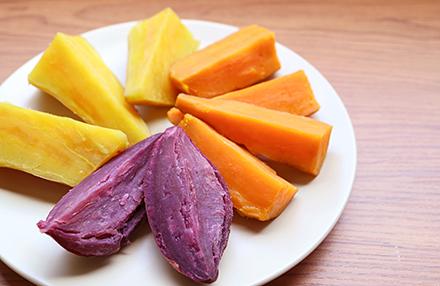
Healthy Eating Tip #19: Sweet Potatoes
Sweet potatoes are a great way to incorporate nutrient-rich foods into your diet. Sweet potatoes are packed with vitamins and minerals, including vitamin A, vitamin C, and potassium. They are also a good source of fiber, which aids in digestion and helps you feel fuller longer. Additionally, sweet potatoes have a lower glycemic index compared to regular potatoes, making them a healthier option for managing blood sugar levels.
ARS scientists know what it takes to make a good sweet potato, whether you like it in pies and custards, baked, as chips or French fries, and even juice or smoothies. Did you know that they develop sweet potato varieties for improved color, flavor, and texture and test them for characteristics that appeal to consumers’ appetites?
Different sweet potato varieties with different flesh color—white, yellow, orange, and purple—are available around the world! Whether baked, roasted, or mashed, sweet potatoes can be a delicious and nutritious addition to any meal. Want to learn more? Check out this question and answer interview with an ARS sweet potato expert.
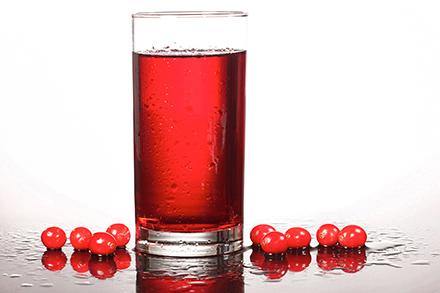
Healthy Eating Tip #20: Cranberries
Eating cranberries is a wonderful way to boost your overall well-being. Cranberries are rich in antioxidants, particularly flavonoids, which help protect the body against free radicals and reduce inflammation. They are also a great source of vitamin C, fiber, and vitamin E. Consuming cranberries regularly has been linked to improved urinary tract health, as they contain compounds that prevent bacteria from adhering to the urinary tract walls. Cranberries have been associated with a reduced risk of certain types of cancer and cardiovascular diseases.
ARS researchers are helping cranberry growers tap into the potential of tools provided by nature that can control cranberry pests. The researchers also are working to strengthen cranberry resiliency as climate change affects production and better understand heat tolerance in cranberries which can lead to improved cranberry variety recommendations for growers.
Enjoy cranberries, fresh, dried, or as a juice. Adding them to your diet can provide numerous benefits.
Listen to this audio podcast to learn how drinking cranberry juice can lead to significant heart health benefits.
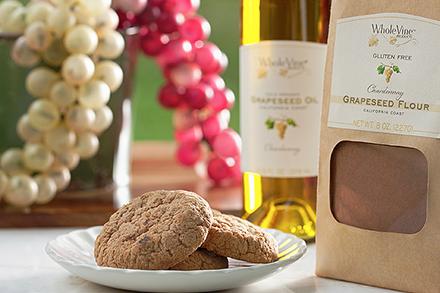
Healthy Eating Tip #21: Healthier Baking
Healthy baking involves making conscious choices to use nutritious ingredients and adopting healthier baking techniques. Instead of using refined flours, try whole grain flours like whole wheat, peanut, or wine grape seed flour, which are higher in fiber and nutrients. Did you know that ARS scientists developed new alternatives to refined white flour? These flours include peanut, chia-oat, amaranth-oat, and wine grape seed flour. You can check them out here. We had consumers in mind when developing these alternatives to help so those with certain dietary needs could enjoy foods like cake and pizza without elevating their health risks.
Another ingredient that you can easily substitute is sugar. Rather than using refined sugars, opt for natural sweeteners like pureed apples, mashed bananas, or honey. Swapping in healthier fats like avocado oil can replace higher fat ingredients like butter. For a nutritional boost, you can incorporate or top your baked goods with nuts and seeds.
Lastly, be mindful of your portion sizes and enjoy your baked goods in moderation.

Healthy Eating Tip #22: Popcorn
Do you love snacks? Who doesn’t! Popcorn, a popular snack can also be a healthy snack option. One serving provides about one-third of the whole grains most American adolescents need. Popcorn is a 100 percent whole grain, is a good source of fiber, and can be a handy snack on the go. When it comes to popcorn as a healthy snack, there are a few tips to keep in mind. First, air-popped popcorn contains fewer calories and less fat. There are many options for healthy prepackaged popcorn at the supermarket, too. Read the ingredients list and nutrition facts to make sure the amounts of sodium and saturated fat are low. Additionally, try to avoid adding excessive amounts of salt, instead experiment with different seasonings like herbs, spices, or even nutritional yeast to give it a cheesy flavor. The key is watching how much of it you eat. To avoid eating more than a serving size, put your serving of popcorn in small bowl and save the rest for another day.
Read more about popcorn nutrition and learn how to make a healthier version of this favorite movie snack.

Healthy Eating Tip #23: Peanuts
Peanuts! Did you know it takes about 540 peanuts to make a 12-ounce jar of peanut butter? 50% or more of the peanuts grown in the United States are made into peanut butter.
Peanuts are a nutritious snack option as they are packed with protein, healthy fats, and fiber. A small handful of peanuts can help curb your hunger in between meals. However, since peanuts are calorie dense, when incorporating them into a healthy eating plan, keep portion control in mind and choose unsalted or lightly salted peanuts to reduce sodium intake. Another healthy option is to consider adding peanuts to your favorite salad, stir-fry, or trail mix.
Contender, a new Virginia-type peanut variety noted for its big, crunchy, and flavorful traits was developed by ARS researchers. It contains high amounts of oleic fatty acids, which can promote cardiovascular health and extend peanut product shelf life. Watch and learn more about Contender in this short video.
What about peanut skins? Unfortunately, peanuts skins can be a major source of processing waste for the industry. Thanks to ARS researchers, they are using the peanut skins to make healthier chocolate without affecting taste of texture. To find out more, listen to our podcast.
Allergic to peanuts? Check out Healthy Eating Tip #9 – Sunbutter as a delicious alternative to peanut butter.
Lastly, be mindful of your portion sizes and enjoy your baked goods in moderation.



